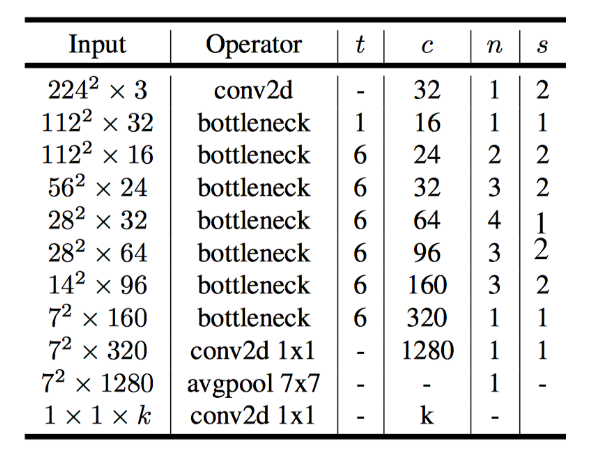背景介绍
MobileNet-V2:是MobileNet的升级版本,Google公司于2018年提出,是一个结构简单,参数量较少的轻量级深度学习网络模型。

MobileNet-V2特点
保留MobileNet的SeparableConv深度可分离卷积结构,并且在深度可分离卷积前通过1x1卷积提升通道数。
引入了反残差结构,借鉴了ResNet的思想,联系了不同尺度的特征
引入了线性瓶颈结构,在残差相加前不使用ReLU6激活函数,避免破坏特征
Separable Convolution

Separable Convolution(深度可分离卷积):是上面两个卷积合二为一的卷积操作。
第一步:DepthwiseConv,对每一个通道进行卷积
第二步:PointwiseConv,对第一步得到的结果进行1x1卷积,实现通道融合
主要作用是大大降低网络的参数量,并且可以调整为任意合适的通道数。第一步的目的是减少参数量,第二步是调整通道数,因此将两个卷积操作结合,组成深度可分离卷积。
MobileNet-V2图像分析

TensorFlow2.0实现
1 | from functools import reduce |

MobileNet-V2小结
MobileNet-V2是一种高效的轻量级深度学习网络,MobileNet-V2模型的参数量和MobileNet几乎相同,都是4M的参数量,因为其结合了不同尺度的特征,因此效果优于MobileNet。